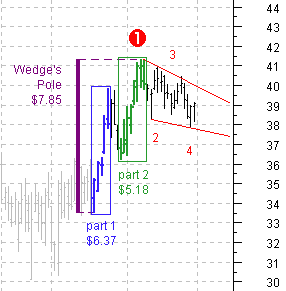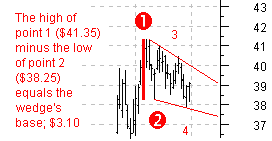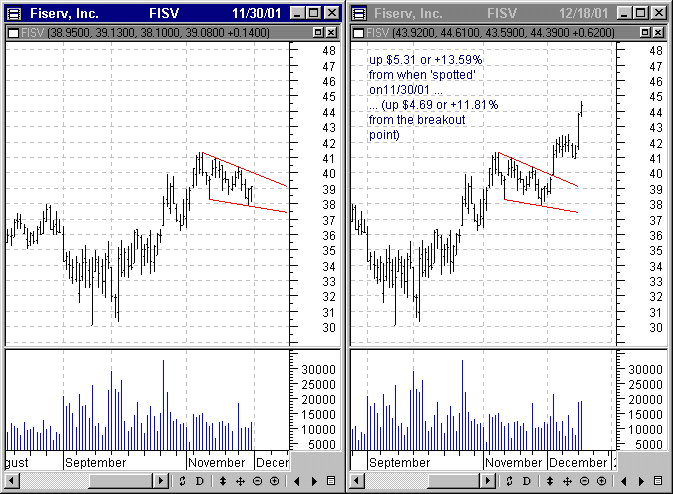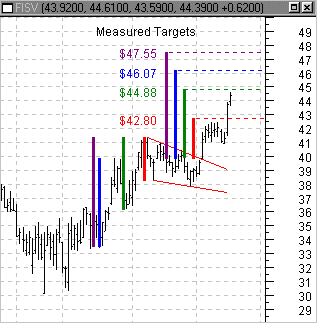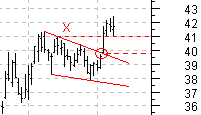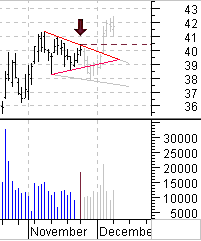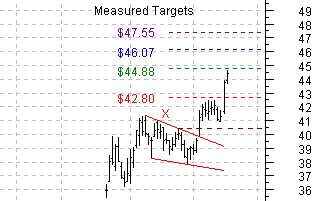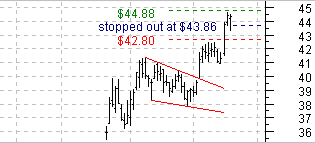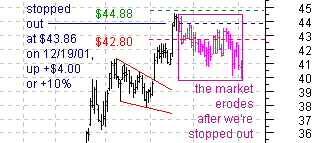|
|
|
||||||
| FISV -- Chapter Two | |||||||
|
|
This one is Fiserv (FISV) and is shown with a falling wedge in an uptrend (bullish). And while the consolidation pattern displays a falling wedge, the move preceding it kind of resembles that of a 'pole' (as in flag pole, -- albeit jagged and broken), like you would see in a bull flag set-up. Like the symmetrical triangle, a bullish flag or wedge's first point (the point farthest left or earliest) is at the top. But unlike the triangle, the move immediately before the consolidation's formation (the 'pole'), is as much a part of the pattern as the flag itself. Often times, a 'pole-like' move will be seen before the consolidation, as in this falling wedge example. And while the chart for FISV is a less than text-book perfect example of a bullish pole, since it could actually be 'measured' in two places due to a pause on the way up, it nevertheless is unmistakable and will help in determining price targets for trading this falling wedge.
I've measured the size of the pole (preceding move) in three places. The purple measurement (overall pole size of $7.85) simply takes the low of the beginning of the move and subtracts that from the high of the move (point one of the pennant). The first part of the move (blue) measures $6.37 (the low to the high, before the pause and retracement). The second part (green) measures $5.18 (the low after the pause to the high of the move). |
||||||
|
|||||||
|
|||||||



